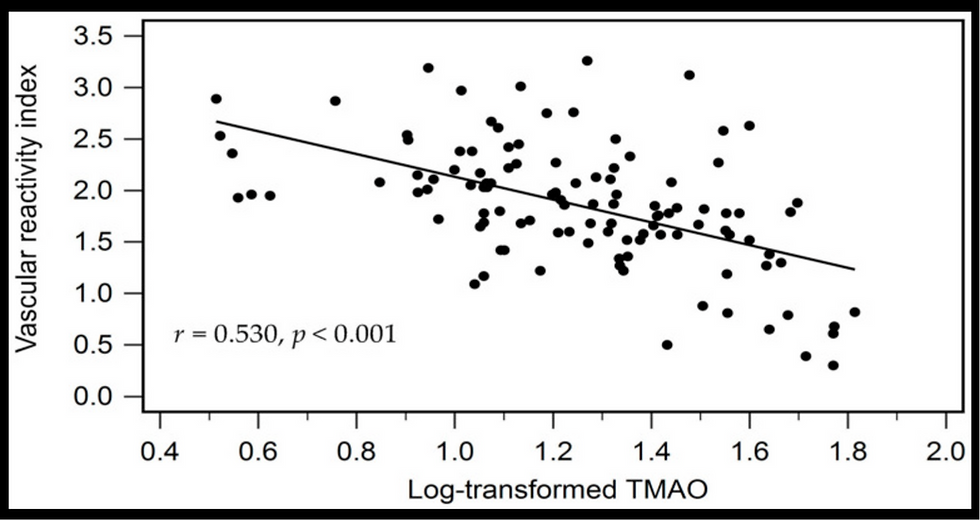Acute Blood Pressure and Cardiovascular Effects of
- heartlung
- Jan 16, 2023
- 2 min read
of Near-Roadway Exposures With and Without N95 Respirators.

Am J Hypertens. 2019 Oct 16;32(11):1054-1065 Acute Blood Pressure and Cardiovascular Effects of Near-Roadway Exposures With and Without N95 Respirators. Morishita M1, Wang L2, Speth K2, Zhou N2, Bard RL3, Li F1, Brook JR4, Rajagopalan S5, Brook RD3. Author information 1 Department of Family Medicine, College of Human Medicine, Michigan State University, East Lansing, Michigan, USA. 2 Department of Biostatistics, School of Public Health, University of Michigan, Ann Arbor, Michigan, USA. 3 Division of Cardiovascular Medicine, University of Michigan Medical School, Ann Arbor, Michigan, USA. 4 Dalla Lana School of Public Health, University of Toronto, Ontario, Canada. 5 Division of Cardiovascular Medicine, Case Western Reserve Medical School, Cleveland, Ohio, USA. Abstract BACKGROUND: The risk for cardiovascular events increases within hours of near-roadway exposures. We aimed to determine the traffic-related air pollution (TRAP) and biological mechanisms involved and if reducing particulate matter <2.5 µm (PM2.5) inhalation is protective. METHODS: Fifty healthy-adults underwent multiple 2-hour near-roadway exposures (Tuesdays to Fridays) in Ann Arbor during 2 separate weeks (randomized to wear an N95 respirator during 1 week). Monday both weeks, participants rested 2 hours in an exam room (once wearing an N95 respirator). Brachial blood pressure, aortic hemodynamics, and heart rate variability were repeatedly measured during exposures. Endothelial function (reactive hyperemia index [RHI]) was measured post-exposures (Thursdays). Black carbon (BC), total particle count (PC), PM2.5, noise and temperature were measured throughout exposures. RESULTS: PM2.5 (9.3 ± 7.7 µg/m3), BC (1.3 ± 0.6 µg/m3), PC (8,375 ± 4,930 particles/cm3) and noise (69.2 ± 4.2 dB) were higher (P values <0.01) and aortic hemodynamic parameters trended worse while near-roadway (P values<0.15 vs. exam room). Other outcomes were unchanged. Aortic hemodynamics trended towards improvements with N95 respirator usage while near-roadway (P values<0.15 vs. no-use), whereas other outcomes remained unaffected. Higher near-roadway PC and BC exposures were associated with increases in aortic augmentation pressures (P values<0.05) and trends toward lower RHI (P values <0.2). N95 respirator usage did not mitigate these adverse responses (nonsignificant pollutant-respirator interactions). Near-roadway outdoor-temperature and noise were also associated with cardiovascular changes. CONCLUSIONS: Exposure to real-world combustion-derived particulates in TRAP, even at relatively low concentrations, acutely worsened aortic hemodynamics. Our mixed findings regarding the health benefits of wearing N95 respirators support that further studies are needed to validate if they adequately protect against TRAP given their growing worldwide usage. © American Journal of Hypertension, Ltd 2019. All rights reserved. KEYWORDS: air pollution; arterial compliance; blood pressure; endothelial function; heart rate variability; hypertension Full-Text
![Lipoprotein(a) levels predict endothelial dysfunction in maintenance hemodialysis patients: evidence from [VENDYS] vascular reactivity index assessment](https://static.wixstatic.com/media/dac531_5285607cc591409a9d83746f042af7c6~mv2.png/v1/fill/w_980,h_980,al_c,q_90,usm_0.66_1.00_0.01,enc_avif,quality_auto/dac531_5285607cc591409a9d83746f042af7c6~mv2.png)


Comments